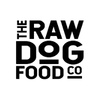July 13, 2025
Raw dog food is exactly what it sounds like — a diet consisting of uncooked, fresh ingredients like meat, bones, and organs, often supplemented with small amounts of fruits and vegetables. The goal is to mimic what dogs' ancestors (wolves and wild canines) would have eaten in the wild.
In New Zealand, dog owners are becoming more health-conscious, not just for themselves but also for their furry friends. As Kiwis embrace organic and whole food diets, they’re also turning to raw feeding to provide dogs with more natural nutrition.
Raw diets are rich in natural fats and oils, which help keep your dog's coat shiny and skin healthy. Many owners report less itching and fewer skin allergies after making the switch.
Raw bones act as natural toothbrushes, scraping away tartar and strengthening the jaw. Say goodbye to smelly dog breath and costly dental cleanings!
Raw-fed dogs usually have smaller, firmer, and less smelly stools. That’s because their bodies utilize more of the food’s nutrients and produce less waste.
A balanced raw diet can lead to more energy, healthier weight, and overall improved wellbeing. Your dog might feel like a puppy again!
Yes, bacteria exist in raw meat — but dogs have much stronger stomach acid and a shorter digestive tract than humans, making them well-equipped to handle it.
Not true! Raw, meaty bones are safe and beneficial. Cooked bones, however, are a big no-no because they can splinter.
While raw feeding can seem pricey upfront, many owners find it more cost-effective long-term due to fewer vet visits and healthier dogs.
These form the base of a raw diet. Muscle meat provides protein and energy, while organ meat offers vital vitamins and minerals.
Bones are crucial for calcium and phosphorus. They also provide mental stimulation and satisfy chewing instincts.
While not necessary, small amounts can add fiber and beneficial phytonutrients. Think leafy greens or blueberries.
Yes! Puppies thrive on raw food when introduced properly, supporting strong bone and muscle development.
Older dogs can benefit too, experiencing renewed energy and reduced arthritis symptoms.
Always consult your vet before switching if your dog has health issues. Some conditions require tailored nutrition.
Some well-known brands include The Raw Dog Food Co, K9 Natural, and Big Dog. These offer pre-made raw meals that take the guesswork out.
You can find raw food at specialty pet stores, local butchers, or directly from online suppliers delivering NZ-wide.
Start slow — mix small amounts of raw food with your dog's regular food, increasing gradually over 7–10 days.
Watch for digestive upsets or changes in behavior. Adjust as needed and consult a professional if unsure.
Wash your hands, clean surfaces, and avoid cross-contamination. Treat raw dog food preparation like handling raw chicken for humans.
Freeze portions to preserve freshness. Thaw safely in the fridge, not on the counter.
Depending on size and activity, it can cost $3–$10 per day per dog. Buying in bulk or DIY options can reduce costs.
While kibble is cheaper up front, raw feeding often reduces long-term health expenses.
Choosing local meats supports NZ farmers and reduces your carbon pawprint.
Bulk buying and reusable containers help cut down plastic waste.
Some vets are skeptical about raw feeding. Find one open to discussing and guiding you safely.
Annual bloodwork and check-ups ensure your dog stays healthy on a raw diet.
DIY gives you full control but requires knowledge to ensure balanced nutrition. Mistakes can lead to deficiencies.
Use trusted recipes and consult with a canine nutritionist. Balance is key!
Many Kiwi dog parents share glowing reviews — improved health, fewer vet visits, and happier pups.
Storage space and sourcing variety can be tricky, but planning ahead helps.
More Kiwis are prioritizing pet wellness, driving growth in the raw dog food sector.
Education campaigns and community groups are helping spread the raw feeding message.
Switching to raw dog food in NZ isn’t just a trend — it’s a lifestyle change that supports your dog’s natural health and wellbeing. While it takes some learning and commitment, the payoff is a happier, healthier companion. Ready to make the switch? Your dog will thank you with wagging tails and bright eyes!
Q1: Can I mix raw food with kibble?
It’s not generally recommended because raw and kibble digest at different rates, which can cause upset stomachs.
Q2: How much raw food should I feed my dog?
A general guideline is 2–3% of your dog’s ideal body weight per day, divided into meals.
Q3: Can I feed raw food to a dog with allergies?
Yes! Many dogs with allergies improve on raw, but consult your vet to tailor the diet.
Q4: Do I need to add supplements?
Some dogs may need fish oil, kelp, or other supplements depending on the diet’s balance.
Q5: Is raw feeding legal in New Zealand?
Absolutely! In fact, NZ has some of the highest-quality meat sources for raw diets.
February 01, 2025
Want to give your dog the best? Discover everything you need to know about homemade raw dog food in NZ! From simple recipes to local ingredient tips, we make it easy to feed your pup fresh, healthy meals they’ll love.
January 13, 2025
Looking for simple and healthy raw dog food recipes in NZ? Discover easy homemade meals using fresh, local ingredients that your dog will love. Perfect for Kiwi dog owners wanting to boost their pup’s health naturally!
October 01, 2024
Looking for fresh, healthy meals for your pet without the hassle? Discover how raw pet food delivery in NZ can bring balanced, nutritious meals right to your doorstep — perfect for busy pet parents who want the best for their furry friends.
Join our mailing list for news, updates and special promotions.
© 2025 The Raw Dog Food Co.
Auckland, New Zealand
Powered by Shopify
